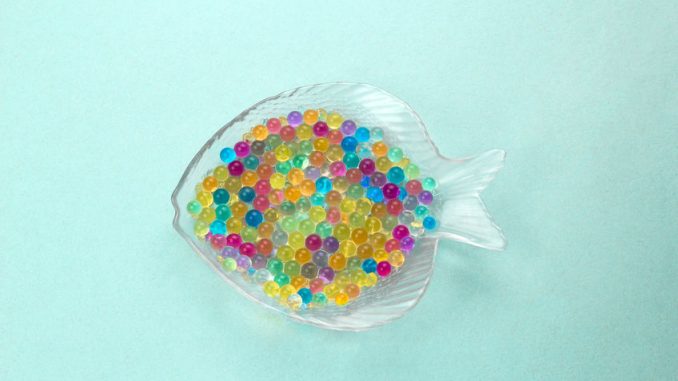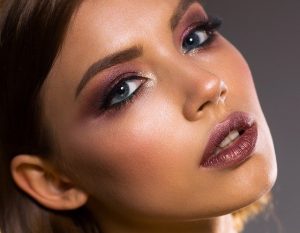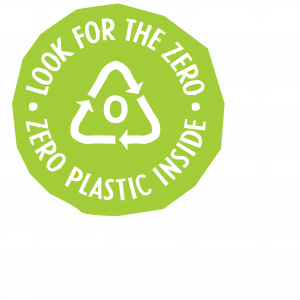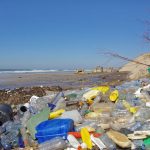
In recent years, microplastics have hit the headlines around the world, but what exactly are they, where do they come from, and why are they a problem?
Microplastics can appear in the environment when plastic packaging is slowly broken apart into ever-smaller pieces. These are referred to as secondary microplastics.
Manufacturers also consciously include tiny insoluble plastic particles and liquid polymer plastics to personal care products because they fulfil a specific function. These are primary microplastics.
Probably the most talked about are the insoluble microbeads, which are added to products used for scrubbing or exfoliating, such as toothpastes and exfoliating creams.
In recent years, major cosmetics companies have replaced microbeads with alternatives with similar exfoliating properties, but these companies do not mention that there may be dozens of other types of liquid microplastics in their products.

Current estimates are that there are more than 500 microplastic ingredients widely used in cosmetics and personal care products.
They are used as emulsifying agents, as cheap fillers and to create ‘gloss’.
You will find them in a wide range of products, but eye makeup, lipstick, blush powders, foundation, skin creams and moisturisers, scrubs, nail polish and sunscreen are definitely the worst offenders!
Are microplastics a problem?
The small size of microplastics means they are not filtered out by water treatment plants, and end up in waterways and oceans.
Unfortunately whether the microplastic is a solid bead or a liquid polymer, once they are in the environment, they are there to stay. They are not biodegradable and are almost impossible to remove.
We also know that plastic in water attracts toxins such as PCB and DDT. Marine wildlife that ingest microplastics might also be ingesting these toxins.
Primary microplastics from cosmetics and personal care products make a significant contribution to the ‘Plastic Soup’ swirling around in our oceans, and that’s before we start to think about the plastic packaging most of them come in.
Once in the water, they are eaten or absorbed by marine wildlife, and passed along the marine food chain. As humans are at the top of the food chain, we are likely to ingest microplastics (with their added toxins) too.
It is perhaps not surprising that researchers have found microplastics in human blood and poo. We also know that nanoplastics can penetrate the placenta.
Recent studies indicate possible risks to human health. Although research is in the early phases, this is definitely an issue to watch closely.
Aren’t Microplastics Already Banned?
The good news is the use of microbeads in rinse-off cosmetic and personal care products is now banned in many countries, including the UK (2018). This means that items such as toothpastes, shower gels and facial scrubs should no longer contain plastic microbeads.
The bad news is that most bans (including the UK ban) only actually apply to ‘rinse-off cosmetics’. Some products classified as “leave on” (skin creams, sun cream, makeup) are not subject to the ban.
While microbeads might be banned, currently this does not apply to liquid microplastics. The cosmetics industry uses these in a huge range of products. Research, based on a database containing millions of products, indicates that almost one third of all cosmetic products contain liquid microplastics. The researchers found 159 different liquid microplastics in more than 50,000 products, including skin care products, shampoos and shower gels.
The European Chemical Agency (ECHA) has proposed to ban this year the intentionally added microplastics to cosmetics, detergents, and paints. However, it is not clear whether this will include liquid microplastics.

How do I avoid microplastics?
First, check the label on the products you have at home. Avoid products containing polyethylene (PE), polypropylene (PP), polyethylene terephthalate (PET), polymethyl methacrylate (PMMA), polytetrafluoroethylene (PTFE) and nylon.
Second, look for brands with the Zero Plastic Inside logo. Organised by Beat the Microbead, it certifies that brand is 100% free of any microplastic ingredients. 108 companies have joined the scheme. Check them out here.
You may also want to take a look at Fauna & Flora International’s Good Scrub Guide.
We also have a range of a range of top quality microplastic-free products in our shop. Take a look!

Leave a Reply